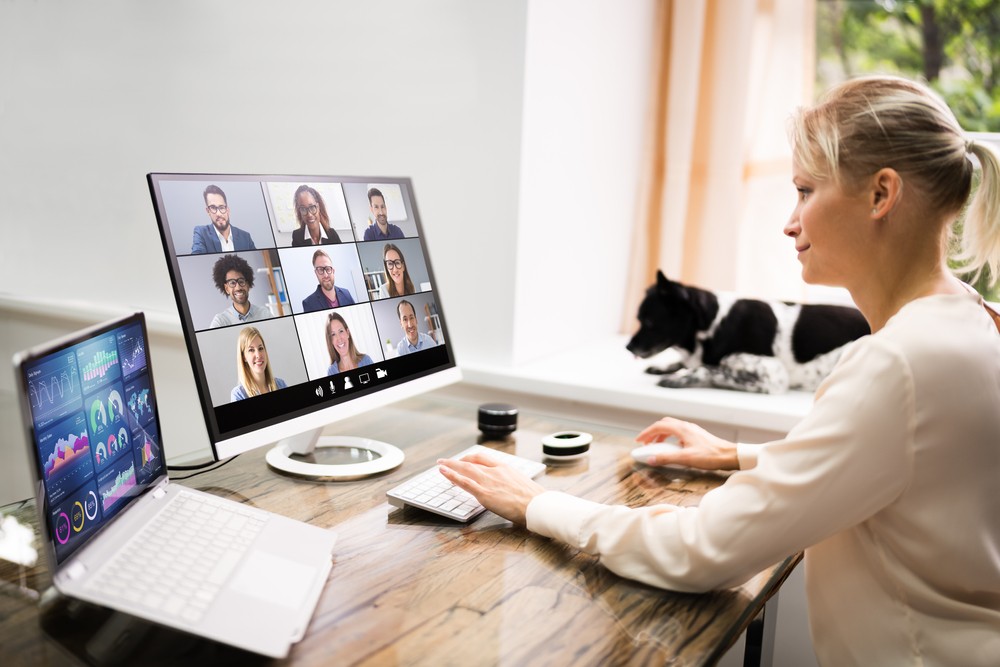The past couple of years have come with a variety of challenges. But it’s also brought some positive developments when it comes to our work life, most notably the global switch to a hybrid work model. Many companies initially made this move as a means of accommodating COVID-19 restrictions, expecting to eventually return to normal, pre-pandemic work patterns.
However, its popularity among employees and the role it’s played as a catalyst for greater digital innovation across several industries has given hybrid work increased longevity. It’s impossible for companies to ignore the positive response from employees — around 80% of professionals admitted they prefer hybrid working over being in the office five days a week — nor can they ignore the efficiencies that hybrid working bought with it. What was intended as a temporary measure to steer businesses through the pandemic has made a clear case in its value and is here to stay.
It’s easy to conflate the speed at which hybrid work style sprung up out of necessity with it being an easy process. But implementing such a fundamental change to work patterns that have been in place for decades was never going to be seamless. Research shows that while many employees prefer hybrid work, a substantial 71% find hybrid meetings stressful owing to technological issues and being unable to fully engage and interact. For this to become the default method of working, employers have to create a fair and balanced work environment that allows all employees to create, collaborate, and work efficiently to the same degree.
Employers adjusting to new work models are faced with the challenge of meeting the employee preferences while providing optimal working conditions that support productivity and collaboration. Achieving this all comes down to creating meeting equity.
Providing equal meeting opportunities
Meeting equity means that each meeting attendee — whether in-person or virtual and regardless of location — has an equal opportunity to participate in a meaningful way. If this isn’t accounted for, the results can include a disengaged workforce and information missed due to varying technology among employees. The concept was originally about keeping minutes, staying on topic, and ensuring the meeting flow was not dominated or side-tracked by more overt personality types. That was when meetings used to consist of everyone being in the same physical space, but with the explosion of hybrid work this term has evolved.
In the post-pandemic hybrid workforce, meeting equity has taken on a whole new set of variables. And while many of which are technology driven, ‘meeting equity’ is evolving to include alternatives to support people with varying work styles — whether it’s accommodating people in different time zones by using asynchronous workflows or supporting those who may be neurodivergent and benefit from features like recorded meetings or meeting transcriptions.
As hybrid work continues to mature, it’s as much about enabling technology as it is encouraging and facilitating collaborative behaviour across a diverse workforce. Technology now enables everyone involved to have a far more inclusive experience than was previously available.
Creating a fair hybrid environment
The key to meeting equity is determining what your business needs, which first starts with understanding how your workforce uses different meetings spaces and what they need to accomplish. Once this is clearly defined, the IT team can identifying what technology upgrades are needed, then create a strategy to build the best environment for collaborative, productive work — in and out of the office. Think of it as employing technology to remove ‘distance’ as a hurdle to collaboration.
By elevating the remote meeting experience all participants are provided an equal opportunity to contribute and share information. In a business world where key decisions, important deals, and employee engagement can all swing on the quality of a hybrid meeting experience, the impact of poor audio quality, delayed video, or overcomplicated conferencing platforms could have severe concequences.
Hybrid work is here to stay, so it’s essential that organisations invest in improving the videoconferencing experience for all involved. For businesses to be best positioned for success — and whatever else the future may bring — videoconferencing built on sophisticated IT infrastructure is more than just a ‘nice to have’, it’s a must. There’s a new generation of employees making it clear that there is a new way of working — and to attract them, keep them engaged and productive, it’s on businesses to make meetings equitable for everyone.




